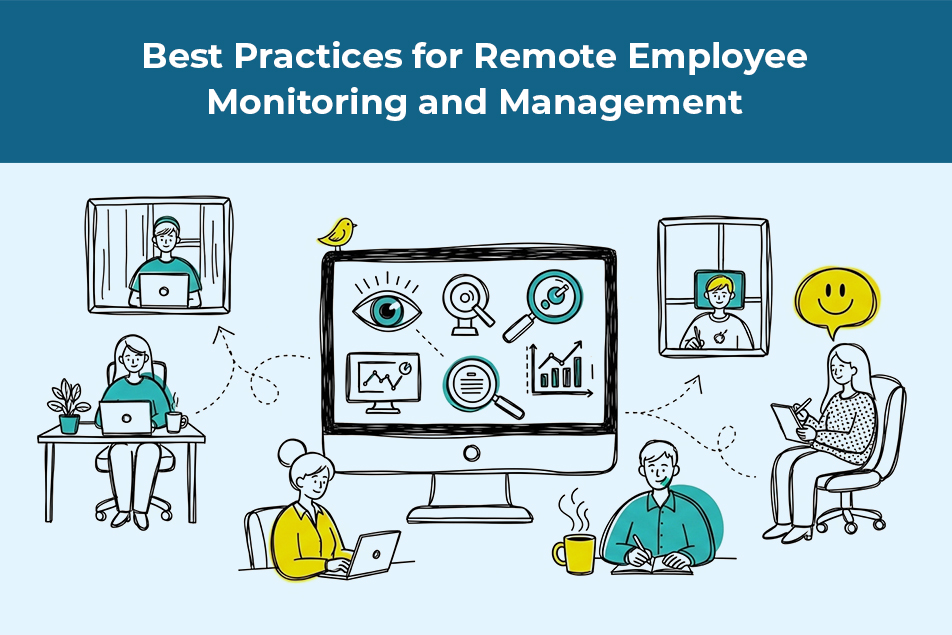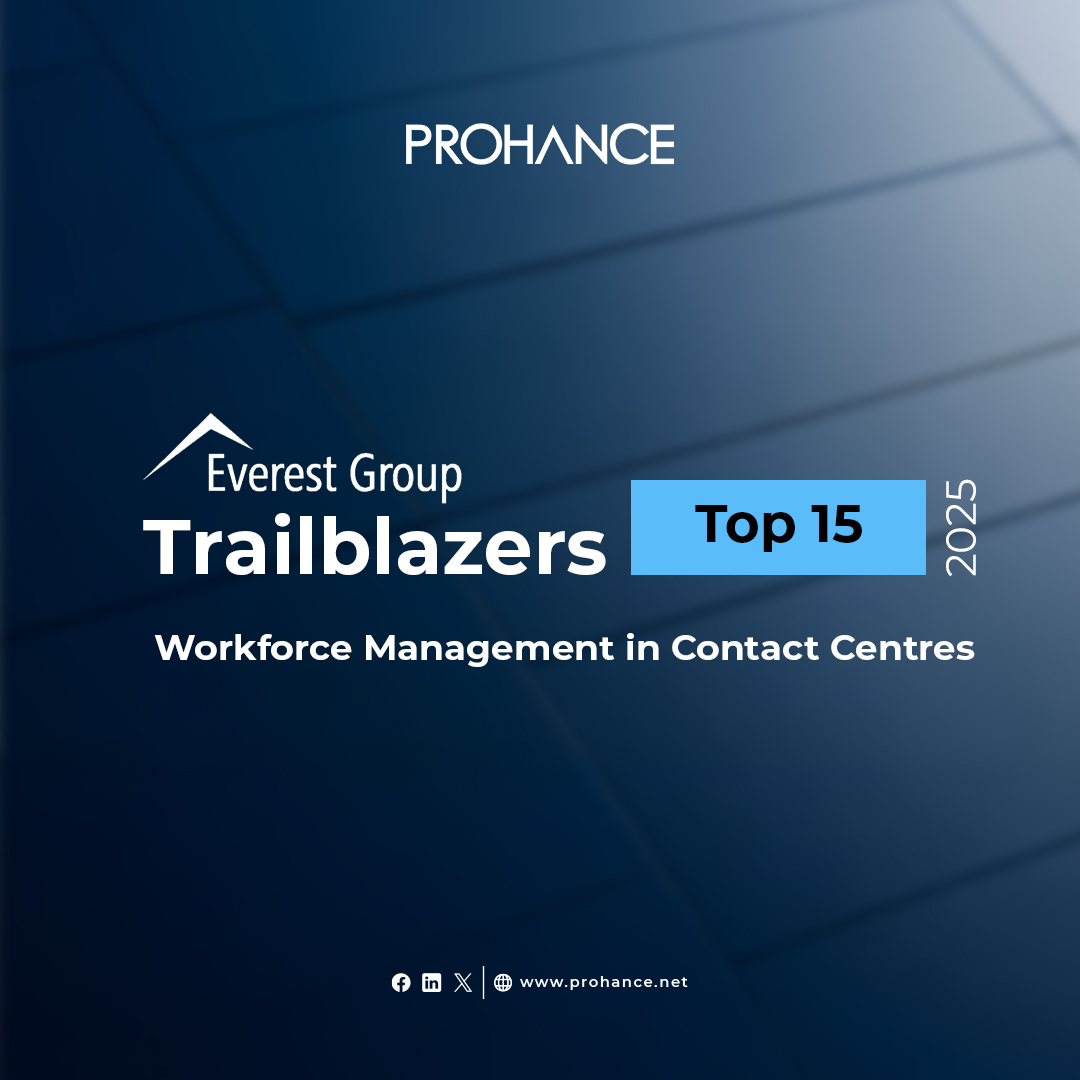A Manager’s Guide to Remote Employee Monitoring and Management
Table of Contents
Today, many businesses have adopted a hybrid model of work, creating new needs and business challenges. Top among those is managing employee productivity and mitigating data security. The go-to solution for this is monitoring employees, done in a way that respects their privacy and fosters a positive work environment.
In this article, we will talk about remote monitoring best practices, its benefits, and choosing the right remote monitoring software. Keep reading to understand how you can achieve it all.
What is Remote Work Monitoring?
Also called remote employee tracking, this is when companies rely on digital tools to observe, track, and engage with employees who work from home or other remote locations. This is mainly done to assess employee performance and productivity, and to ensure security compliance.
With more businesses adopting remote working models, employee monitoring has become more acceptable. From small businesses to Fortune 100 corporations, everyone realizes that remote employee tracking is important for overall productivity and security.
How to Monitor Employees Working from Home
Every business works differently, and there isn’t a one-size-fits-all remote monitoring method. Let’s look at some of the more common monitoring methods that you can use effectively.
Workforce Management Software
The market has a range of specialized workforce management software that makes monitoring employees a piece of cake. These tools work by collecting data on team member performance – including how employees spend their time online, which apps they use and how often, their productivity at home versus at the office, etc. The data can be used to understand patterns and help managers address issues as they arise.
Time Tracking Tools
Another way to understand how employees spend their day is by understanding how their day is structured. These tools give a detailed breakdown of time spent on tasks and project work, meetings, and other distractions. Remember, the idea is not to micromanage every minute of your employees’ day but to get a sense of productivity. This gives managers the information to help remote employees utilize their time efficiently.
Schedule Adherence Tracking
This is a helpful tactic that gives managers a clear idea about whether the hours worked match the actual scheduled hours. This is a commonly used method in the service-oriented sector, such as customer service or IT support, where people expect employees to be available during set hours. The method also works in the case of diverse teams spread across different geographies and time zones.
Hybrid Work Monitoring
According to Gallup, 50% of remote workers spend some parts of their work hours at the office. Here, using just technology might not be enough. Combining technology with human oversight – a specialized hybrid workforce monitoring strategy – comes in handy. One part is the hybrid workforce management software that can track employee productivity irrespective of where they are. The second part takes those insights and helps develop policies and conduct performance evaluations.
Employee Coaching and Feedback
Managers often open channels of communication between employees and themselves to facilitate coaching and feedback. These tools are a great way to complement employee monitoring and managers can use them to provide real-time feedback and brainstorm on achieving personal goals. These work especially well with remote teams who feel seen and heard, as part of the larger team, and put in their best effort at work.
How Can Your Organization Benefit from Remote Employee Monitoring?
Remote employee monitoring gives an organization crucial information and insights into workforce productivity and efficiency. Let’s take a look at how this tool can yield advantages for organizations.
Increased Productivity Levels
When employees work outside the office, it is challenging to keep track of how they’re managing their time and resources. Remote monitoring offers a transparent view of remote employees working outside the physical office. There are various productivity tracking tools that can help managers by tracking key metrics, such as active hours, task completion rates, and project timelines. With this data in hand, managers can tailor their team strategy to individual team members.
Better Optimized Business Processes
The data gathered from remote employee monitoring software goes a long way in supporting business process optimization. Managers can look for ways to streamline operations and strive to improve service delivery. Analyzing the data can help identify bottlenecks, automate repetitive tasks, update old apps, and recognize processes that could do with better utilization of resources and time. Getting this detailed visibility into daily operations helps managers make better decisions and adapt to changing market demands in real time.
Reduce Security Risks
Tracking employee activity lets managers know when employees are engaging in risky behaviors, like unsafe filesharing, unauthorized data access, misuse of company resources, etc. The tool can work across all work environments, irrespective of actual employee location. The tool can be preset with alerts for specific activities and can maintain a log of user actions. By keeping a tab on employees’ digital activities, an organization can detect and minimize the threat of a potential data leak.
Recognize Employee Achievements
Remote employees often feel isolated and unseen. Using a tool like remote employee monitoring software reduces this by allowing managers to provide real-time feedback and proactively recognize and praise hard work. This reduces discontentment, increases engagement, and has a positive impact on employee morale. Analyzing the data gathered from the tool also shines a light on issues like overwork and unclear job expectations. Regular monitoring of employee well-being creates a culture of openness, where employees feel valued and heard.
Choosing the Right Remote Monitoring Software
Before shortlisting a remote employee monitoring solution for your organization, it is important to understand your needs and the features it offers. Look out for these key features and functionalities during your evaluation process.
Productivity Metrics
The idea behind remote monitoring is to enhance productivity. For that, you need a solution with built-in productivity metrics that can assist you with data-driven decisions. The remote employee monitoring software must be able to analyze work patterns and provide insights so you can optimize productivity and work on employee engagement. Getting valuable information on unproductive time and productive time can reveal problem areas to be improved upon.
Security Alerts
An important feature to consider during the selection process is data security. You need to find a reliable way to protect company data, especially when employees work offsite on personal devices. Assess the software’s ability to monitor and restrict the transfer of sensitive company data by unauthorized personnel. Check whether the solution can set up alerts in real time in case of potential security threats, unauthorized access, odd behavior patterns, and unusual activities.
Employee Dashboards
Remote employee monitoring software also finds use as a self-correcting tool. Choose a solution that can provide personal insights. Employees can track, study, and correct their remote working habits to improve productivity.
Multi-Channel Monitoring
Can the software work with multiple channels, tracking communication across email, instant messaging, social media, etc.? The feature should give you detailed analytics and alerts that provide a holistic view of all digital interactions – identify productivity trends, time wasters, and security risks across all communication channels used at work.
Compatibility with Different Operating Systems
Additionally, the employee monitoring software should be able to support the varied operating systems used by your workforce – check for Windows, macOS, and Linux compatibility. Check whether the software is equipped with apps that work on mobile devices like smartphones and tablets that are used by your employees for work. Selecting compatible software that is platform-agnostic helps in seamless monitoring across the entire organization.
Privacy Measures
In all this, don’t forget about employee privacy. If you want employee monitoring to be effective, you cannot afford to neglect employee privacy. Ensure the software does not focus on collecting intrusive data — no camera access, no keystroke logging, and no email reading.
Are You Ready to Start Monitoring Your Remote Team?
Not all remote employee monitoring methods are the same. Done correctly, they can help give a boost to team productivity. However, if handled badly, they can infringe on employee privacy and create trust issues.
Managers must study all available options and choose a solution that can help build an engaged, productive team.






